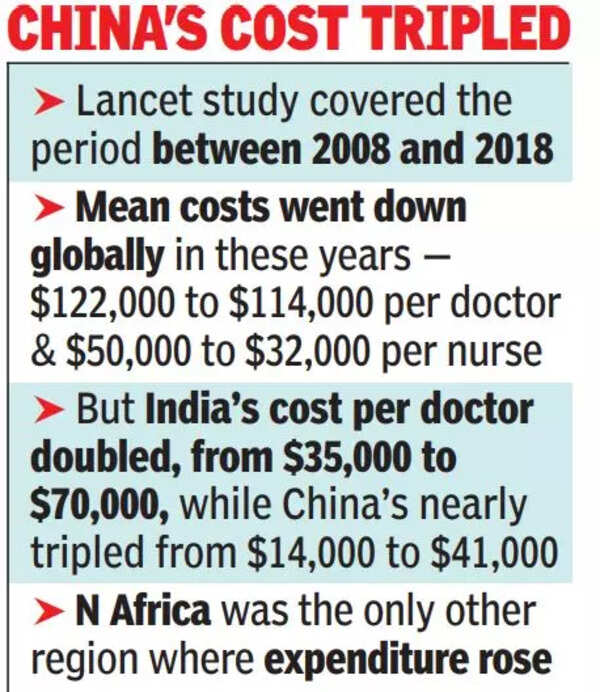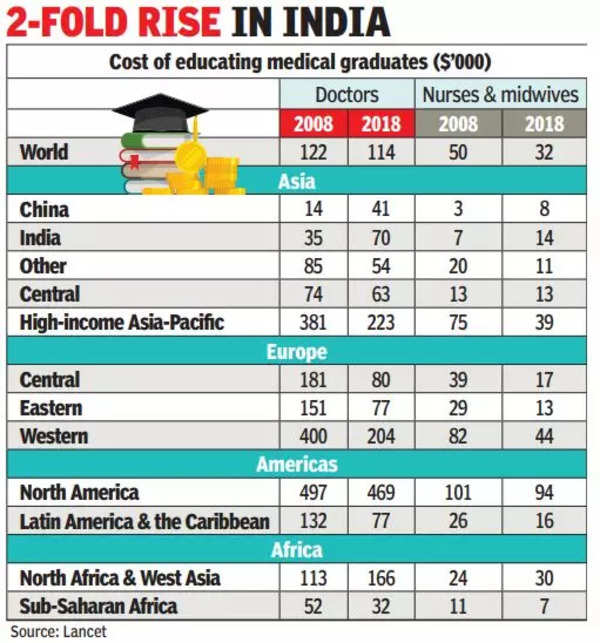The pattern was the same for nurses with estimated spending per nursing graduate declining worldwide, while it increased 167% in China and doubled in India. The only other region where the cost per graduate increased was North Africa, where the cost per doctor increased by 47% and by 25% for nurses.
According to the study’s estimates, approximately $ 110 billion was invested globally by governments and student families in medical and nursing education in 2018. Of this, $ 60.9 billion was invested in doctors and 48, $ 8 billion in nurses and midwives.

The paper examines important developments in medical education to assess potential advances and problems with health worker education following the Covid-19 pandemic. Average costs in 2018 were $ 114,000 per physician and $ 32,000 per nurse. In 2008, China had the lowest estimated spending per medical graduate at just $ 14,000 (Rs 6 lakh) followed by India, where it was just $ 35,000 (Rs 15 lakh at the 2008 exchange rate of Rs 43 for a dollar). This is far below the estimate of Rs 1 crore or more that Indian colleges widely claim as spending per medical graduate.
Spending fell most dramatically in Europe, where it halved in all European regions between 2008 and 2018. It also fell by almost 42% in Latin America. Per capita expenditure on training doctors and nurses was ten times higher in North America than in sub-Saharan Africa.

Money spent on training doctors and nurses was the highest in North America ($ 21.4 billion), followed by Western Europe ($ 8 billion). Globally, 56% of medical schools were public and 39% private. However, the increase in the number of private schools exceeded the increase in the number of public schools, demonstrating that not enough public funding was occurring to meet the demand for health workers.
The increase in the number of graduates has been more consistent in high-income countries than in low-income countries and in private schools than public ones. “Despite having a higher density of health workers and a higher number of graduate professionals than low-income countries, high-income countries (and high-income regions within countries) continue to attract and retain professionals from other countries. and low-income regions, “the study noted.
According to the document, globally, the annual number of medical and nursing graduates nearly doubled for doctors and tripled for nurses and midwives over the 10-year period. This is much higher than the global population growth of just 8%, thus nearly doubling the ratio of doctors to population. Unsurprisingly, nurses make up the majority (59%) of healthcare workers, more than all other professional groups combined.
